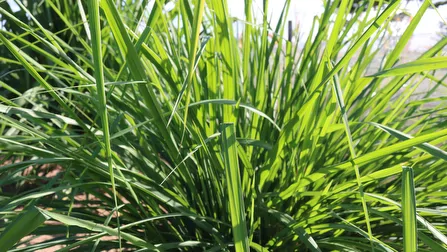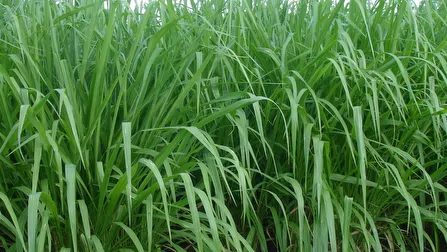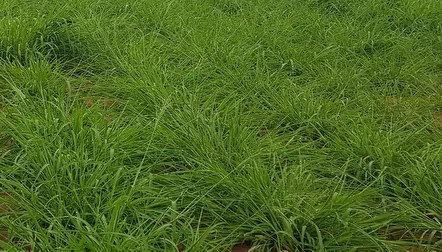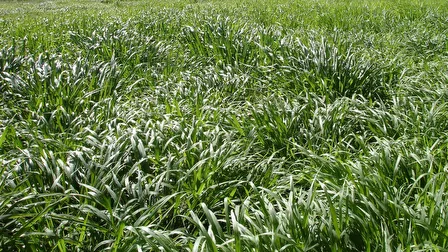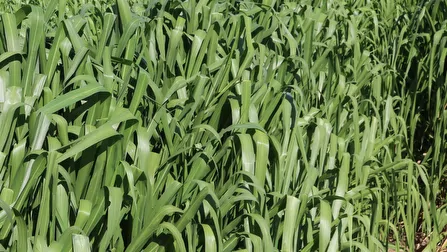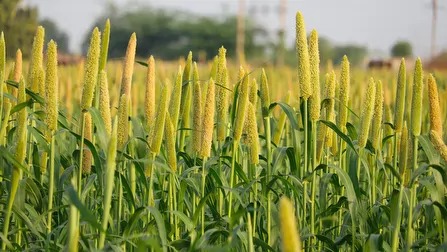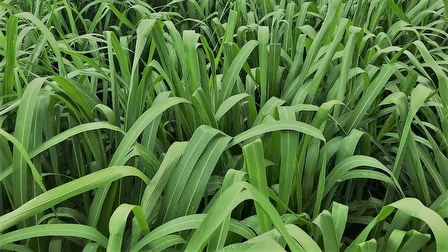
Indicação
O Miyagui trata-se de uma planta cespitosa de crescimento ereto, de ciclo perene, porte médio a alto (até 2,50m de altura), com intenso perfilhamento basal, o colmo apresenta cerosidade, as folhas são de coloração verde escura podem atingir 120 cm e 5 cm de largura. Possui ciclo de florescimento médio e produz grande quantidade de sementes. A porcentagem de degrana das sementes após a amadurecimento é bem menor, comparado com Mombaça e sua panículas, apresentam-se mais compactas.
Megathyrsus maximus cv. Miyagui
Panicum maximum cv. Miyagui
Média a alta fertilidade
Pastejo direto, rotacionado e silagem
25 a 30 t/ha/ano de matéria seca (M.S.)
8 a 14%
2,50 m
Excelente
Média
Tolerante
Média
Perene
Utilização e Manejo
O capim Miyagui pode ser recomendado para bovinos de leite e de carne nas fases de cria, recria e engorda. Devido a sua grande produção de forragem e excelente qualidade nutricional, o miyagui proporciona um bom desempenho no campo. A aceitabilidade e digestibilidade de sua forragem são fatores de destaque desta cultivar. Trata-se de um Panicum Maximum que deve ser estabelecido em solos corrigidos e adubados, sempre de acordo com a análise de solo, pois é uma cultivar exigente em fertilidade. Deve ser pastejada quando as plantas atingirem 90 a 100 cm de altura e os animais devem ser retirados quando a planta for rebaixada a 20 a 30 cm do solo. A rebrota na época chuvosa ocorre no máximo em 28 dias, evite colocar os animais. No período seco o manejo das mudas totalmente e deve-se sempre respeitar a altura para saída dos animais do piquete. A adubação de manutenção e de produção deve ser feita anualmente durante o período chuvoso, utilizando pelo menos 50 kg/ha/ano de nitrogênio. Os demais nutrientes devem ser repostos de acordo com a análise de solo. Informações: Anprosem.
